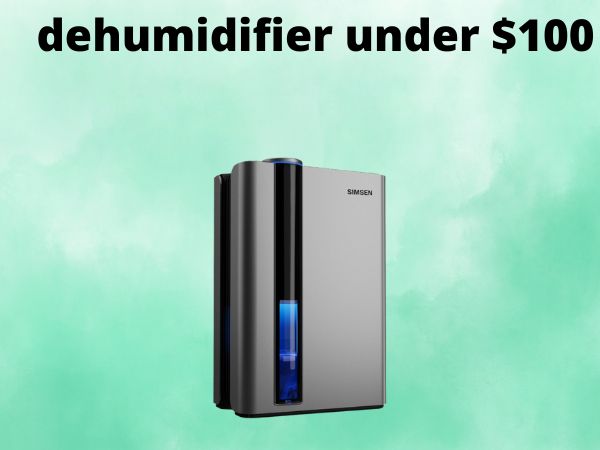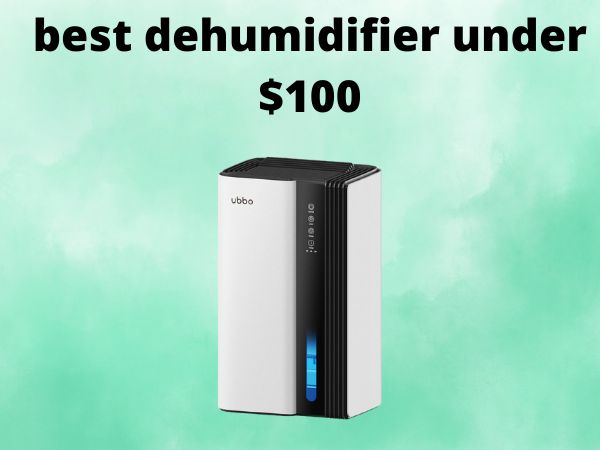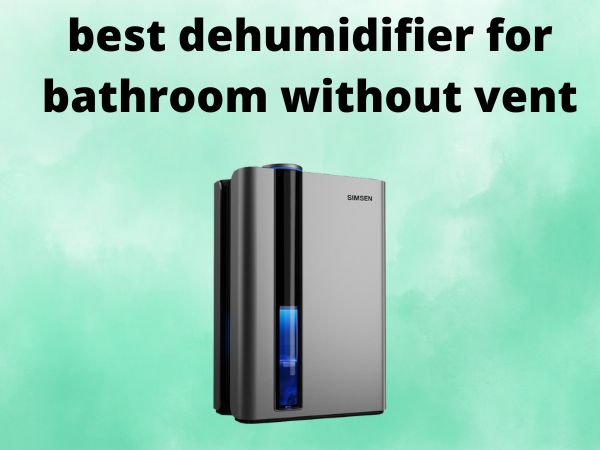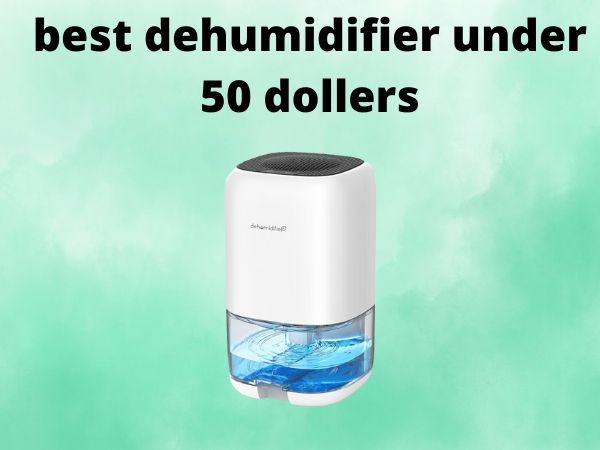5 Best Dehumidifiers Under $100 [In 2026]
Living in humid environments can be uncomfortable and potentially harmful to both your health and home. Excess moisture creates the perfect breeding ground for mold, mildew, and dust mites, while also causing musty odors and damaging your belongings. Fortunately, you don’t need to break the bank to combat these issues. In this comprehensive guide, I’ll walk you through the top five dehumidifiers available for under $100 that effectively reduce humidity levels without emptying your wallet.
I’ve personally researched and analyzed each model based on performance, features, user reviews, and overall value. Whether you need a dehumidifier for your bathroom, bedroom, basement, or RV, this article will help you find the perfect budget-friendly option to keep your spaces dry and comfortable.
Table of Contents
Top 5 Dehumidifiers Under $100 Review
After thorough research and analysis of customer feedback, I’ve identified the five best dehumidifiers available for under $100. Each offers unique benefits while providing excellent humidity control on a budget.
UBBO 850 sq.ft Dehumidifier with Dual Semiconductor Technology
The UBBO dehumidifier stands out immediately with its innovative dual semiconductor condensers—a feature that significantly boosts its moisture removal performance compared to similar models.
This unit covers spaces up to 850 square feet and can remove up to 1.2 liters of moisture daily under optimal conditions (86°F, 80% RH). The 95oz (2.8L) water tank is generous for its size class and provides ample capacity before requiring emptying.
What makes this model particularly appealing is its ultra-quiet operation—especially in sleep mode where noise levels drop to a barely perceptible 35dB. This makes it perfect for bedrooms, nurseries, or any space where noise sensitivity is important.
Additional standout features include:
- Timer function with 8/16/24 hour settings
- Seven color ambient lighting options
- Built-in air filter and aromatherapy box
- Auto shut-off with visual and audible alerts
- Included drain hose for continuous drainage
User reviews consistently praise the UBBO’s moisture removal efficiency and quiet operation. Many report noticing a significant difference in air quality and comfort within days of installation.
Pros and Cons of the UBBO Dehumidifier
Pros:
- Dual semiconductor technology for superior moisture extraction
- Exceptionally quiet operation (35dB in sleep mode)
- Versatile drainage options (tank or continuous drain)
- Customizable timer settings
- Added air purification with filter and aromatherapy options
- Attractive design with optional mood lighting
Cons:
- Higher price point within the sub-$100 category
- Slightly smaller coverage area than some competitors
- May consume more power due to dual condensers
SIMSEN 800 sq.ft Dehumidifier with Detachable Filter
The SIMSEN dehumidifier offers solid performance for spaces up to 800 square feet, with a moisture removal capacity of up to 34oz (1L) per day under optimal conditions. Like our top pick, it features a 95oz removable water tank that provides good capacity between emptying.
What distinguishes this model is its focus on air quality through its detachable, washable filter system. This addition helps remove not just moisture but also airborne particles, making it an excellent choice for those with allergies or respiratory concerns.
The unit operates at approximately 35dB in sleep mode, providing a quiet environment for bedrooms and living spaces. The colorful atmosphere lights add a nice aesthetic touch, with customizable options to suit your preference or mood.
Key features include:
- Detachable and washable air filter
- Dual operation modes (power and sleep)
- Auto shut-off with indicator light
- Continuous drainage option with included hose
- Compact, ergonomic design with recessed handles
Users particularly appreciate the SIMSEN’s effectiveness in bathrooms and kitchens, where both humidity control and air purification benefits are most noticeable.
Pros and Cons of the SIMSEN Dehumidifier
Pros:
- Enhanced air purification with detachable filter
- Quiet operation suitable for bedrooms
- Ergonomic design with convenient carrying handles
- Customizable ambient lighting
- Includes drain hose for continuous operation
- Good overall value for the feature set
Cons:
- Slightly smaller coverage area (800 sq.ft)
- Lower daily moisture removal than some competitors
- Filter requires regular cleaning for optimal performance
NineSky 1000 sq.ft Dehumidifier with Colorful LED Lighting
The NineSky dehumidifier offers impressive coverage for its price point, effectively handling spaces up to 1000 square feet. Using semiconductor condensation technology, this unit provides efficient moisture removal while maintaining relatively quiet operation.
One of the NineSky’s distinguishing features is its compact footprint relative to its coverage area. At just 8″D x 12″W x 8″H, it occupies minimal space while still providing substantial dehumidification power.
The seven-color LED lighting system doubles as both an attractive design element and a functional indicator. Users can select a static color or enjoy a color-changing cycle that adds a pleasant ambiance to any room.
Notable features include:
- Two working modes (High Speed and Night Mode)
- Auto shut-off safety protection
- Compact yet powerful design
- Coverage up to 1000 sq.ft
- Attractive modern aesthetic
User reviews frequently mention the unit’s effectiveness in basements, bathrooms, and bedrooms, with many noting improved air quality and reduced moisture-related odors within days of operation.
Pros and Cons of the NineSky Dehumidifier
Pros:
- Excellent coverage area for the price (1000 sq.ft)
- Compact size relative to coverage capacity
- Attractive design with customizable lighting
- Simple, user-friendly operation
- Good moisture removal capacity
- Auto shut-off safety feature
Cons:
- No continuous drainage option mentioned
- Fewer advanced features than some competitors
- Limited speed/mode options (only two)
ToLife 1000 sq.ft Portable Dehumidifier
The ToLife dehumidifier combines excellent coverage capacity with intelligent features designed for user convenience. This unit effectively services areas up to 1000 square feet, making it suitable for larger spaces like basements, living rooms, and open-plan areas.
What sets this model apart is its ultra-quiet operation in sleep mode—with noise levels below 30dB, it’s one of the quietest options in our roundup. This makes it particularly well-suited for bedrooms, nurseries, or any space where noise sensitivity is important.
The unit features a clean, modern design that blends well with most home decors. Its compact dimensions (8.27″D x 5.55″W x 13.78″H) and built-in handles make it easy to relocate as needed throughout your home.
Key features include:
- Two operation modes (powerful and sleep)
- Seven color ambient lighting options
- Extremely quiet operation (<30dB in sleep mode)
- Auto shut-off protection
- 95oz water tank capacity
- Portable design with handles
Users consistently praise the ToLife’s effectiveness in quickly removing moisture, with many reporting noticeable improvements in air quality and comfort after just a few hours of operation.
Pros and Cons of the ToLife Dehumidifier
Pros:
- Excellent coverage area (1000 sq.ft)
- Ultra-quiet operation below 30dB in sleep mode
- Attractive design with customizable lighting
- Highly portable with built-in handles
- Auto shut-off protection
- Good size-to-performance ratio
Cons:
- No mentioned continuous drainage option
- Limited details on filter system
- Slightly larger dimensions than some competitors
KNKA 1000 sq.ft Quiet Dehumidifier with Sleep Mode
Rounding out our top five is the KNKA dehumidifier, which offers an impressive combination of coverage area, moisture removal capacity, and user-friendly features at a budget-friendly price.
This unit can effectively dehumidify spaces up to 1000 square feet and removes up to 40oz of moisture daily under optimal conditions (86°F, 80% RH). The large 95oz water tank reduces emptying frequency, adding to its convenience.
The KNKA shines in quiet operation, with noise levels as low as 30 decibels in sleep mode. The sleep mode also automatically disables the unit’s lighting, creating an undisturbed environment perfect for overnight use in bedrooms.
Standout features include:
- Low 30dB noise level in sleep mode
- 40oz daily moisture removal capacity
- Auto-off protection when tank is full
- Seven-color LED lighting with customization options
- Compact dimensions (6.22″D x 7.95″W x 13.78″H)
- Simple, intuitive controls
User reviews highlight the KNKA’s effectiveness in various environments, from bathrooms and basements to bedrooms and RVs. Many users report significant improvements in humidity levels and air quality within 24-48 hours of operation.
Pros and Cons of the KNKA Dehumidifier
Pros:
- Strong moisture removal capacity (40oz daily)
- Excellent coverage area (1000 sq.ft)
- Very quiet operation (30dB in sleep mode)
- Intuitive touch-sensitive controls
- Smart auto-stop protection
- Attractive design with customizable lighting
- Compact footprint
Cons:
- No mentioned continuous drainage option
- Limited information on filter system
- Fewer advanced features than some competitors
Understanding Why You Need a Dehumidifier
Before diving into the specific models, let’s explore why controlling humidity in your home is so important and how these affordable dehumidifiers can make a significant difference in your daily life.

Health Benefits of Controlling Indoor Humidity
Did you know that the ideal indoor humidity level should be between 40% and 60%? When levels exceed this range, you’re likely to experience various health issues:
- Respiratory problems: High humidity can worsen asthma and allergy symptoms by increasing airborne allergens like mold spores and dust mites.
- Skin irritations: Excessive moisture can cause uncomfortable skin conditions and make existing problems like eczema flare up.
- Sleep disturbances: Have you ever found it difficult to sleep in muggy conditions? High humidity interferes with your body’s natural cooling process during sleep.
- General discomfort: That sticky, heavy feeling in humid environments isn’t just unpleasant—it can reduce your energy levels and overall wellbeing.
A good dehumidifier works by drawing in moist air, removing the excess water, and releasing drier air back into your room. Even budget-friendly models can make a noticeable difference in how you feel and breathe within your home.
Protecting Your Home From Moisture Damage
Beyond personal comfort, controlling humidity protects your living space and belongings:
- Prevents mold and mildew growth: These fungi thrive in damp environments and can damage walls, ceilings, furniture, and clothing.
- Reduces musty odors: That distinctive “damp basement” smell disappears when moisture levels are properly controlled.
- Protects wooden structures and furniture: Excessive moisture causes wood to warp, swell, and eventually rot.
- Preserves electronics and metal items: High humidity accelerates corrosion and can damage sensitive equipment.
- Prevents peeling paint and wallpaper: Moisture causes adhesives to fail and surfaces to bubble or peel.
By investing in an affordable dehumidifier, you’re potentially saving hundreds or even thousands of dollars in home repairs and replacement costs down the line.
How to Choose the Right Budget Dehumidifier
Not all dehumidifiers are created equal, and finding the right one depends on your specific needs. Here’s what to consider when shopping for a dehumidifier under $100:
Coverage Area Considerations
The most important factor in choosing a dehumidifier is matching it to your space size. Manufacturers typically list a maximum square footage their units can effectively cover:
- Small rooms (up to 300 sq.ft): Bedrooms, bathrooms, laundry rooms
- Medium spaces (300-800 sq.ft): Living rooms, larger bedrooms, small basements
- Larger areas (800-1000+ sq.ft): Open floor plans, basements, garage spaces
For budget dehumidifiers under $100, you’ll typically find coverage ranges between 200-1000 sq.ft. Be realistic about your needs—it’s better to choose a unit rated for a slightly larger area than your space to ensure efficient dehumidification.
Water Tank Capacity and Drainage Options
Budget dehumidifiers typically collect water in a removable tank that requires manual emptying. Consider:
- Tank size: Most units in this price range offer 80-95oz (2.3-2.8 liter) capacity
- Emptying frequency: Larger tanks mean less frequent emptying, which is more convenient
- Drainage options: Some models include a drain hose for continuous drainage, eliminating the need to empty the tank manually
- Auto shut-off protection: This essential safety feature prevents overflow when the tank fills
For spaces with significant moisture problems, look for models that include a drain hose option, as this allows for unattended operation over longer periods.
Noise Levels and Operation Modes
Noise can be a major concern, especially if you’re using the dehumidifier in bedrooms or living spaces:
- Decibel levels: Look for units advertising “quiet operation” with ratings of 35-45dB or lower
- Sleep/night modes: These reduce fan speed and noise levels for nighttime use
- Multiple speed settings: The ability to adjust between high performance and quieter operation gives you more flexibility
In general, budget dehumidifiers with semiconductor technology tend to run quieter than traditional compressor models, making them ideal for living spaces.
Additional Features Worth Having
Several extra features can enhance your experience and provide better value:
- LED indicators: These help monitor operation status and alert you when the tank needs emptying
- Automatic humidity control: Some units can maintain a set humidity level automatically
- Washable filters: These improve air quality and extend the life of your dehumidifier
- Colorful night lights: A surprisingly common feature in budget units that adds ambiance
- Timer functions: Allow you to run the unit for set periods without manual control
- Portability features: Lightweight design and carrying handles make it easy to move between rooms
While you won’t get all premium features at this price point, many budget dehumidifiers now include several of these convenient additions.
Comparison of the Top 5 Budget Dehumidifiers
To help you make the right choice for your specific needs, let’s compare these five excellent budget dehumidifiers across key performance metrics.
Performance and Moisture Removal Efficiency
When it comes to pure dehumidification power, here’s how our contenders stack up:
- UBBO: With its dual semiconductor condensers, this unit removes up to 1.2L (approximately 40.6oz) of moisture daily under optimal conditions. This makes it the most powerful option for serious humidity issues.
- KNKA: Not far behind, this model extracts up to 40oz of moisture daily, offering excellent performance for its price point.
- ToLife: While specific extraction rates aren’t provided, user reviews suggest strong performance comparable to the KNKA model.
- NineSky: Also delivers solid moisture removal, though specific daily quantities aren’t specified in the available information.
- SIMSEN: Removes up to 34oz daily, which is still respectable but slightly less than our top performers.
For extremely humid environments or spaces with active moisture problems (like bathrooms, laundry rooms, or damp basements), the UBBO or KNKA models likely offer the best performance. For maintenance dehumidification in moderately humid environments, any of these units would perform admirably.
Noise Levels and Sleep-Friendly Operation
Noise consideration is crucial, especially for bedroom or living area use:
- ToLife: Leading the pack with <30dB operation in sleep mode, making it nearly silent.
- KNKA: Also extremely quiet at approximately 30dB in sleep mode.
- UBBO: Very quiet operation at 35dB in sleep mode.
- SIMSEN: Operates at about 35dB in quiet mode, matching the UBBO.
- NineSky: Specific decibel ratings aren’t provided, but user reviews suggest quiet operation comparable to competitors.
All five models offer sleep or night modes that reduce both operational noise and lighting, making them suitable for overnight use. However, if absolute quiet is your priority, the ToLife and KNKA models hold a slight edge.
Special Features and Design Considerations
Beyond basic dehumidification, these additional features might influence your decision:
Air Filtration:
- The UBBO and SIMSEN explicitly feature air filtration systems
- UBBO adds an aromatherapy feature for improved air quality
- Other models may include basic filtration, but it’s not highlighted as a primary feature
Drainage Options:
- UBBO and SIMSEN clearly specify continuous drainage options with included hoses
- Other models focus on tank capacity and auto shut-off features
Lighting Features:
- All five models offer customizable LED lighting with seven color options
- All allow locking on a preferred color or disabling lights entirely
Design and Portability:
- SIMSEN features ergonomic recessed handles for easy transport
- ToLife includes built-in handles for mobility
- All models feature compact designs, with the KNKA offering the smallest footprint
Timer Functions:
- UBBO specifically offers programmable timer settings (8/16/24 hours)
- Other models focus on continuous operation with auto shut-off safety
Tips for Getting the Most from Your Budget Dehumidifier
To maximize the effectiveness of your sub-$100 dehumidifier, follow these practical tips:
Optimal Placement in Your Home
Where you place your dehumidifier significantly impacts its performance:
- Position centrally: Central placement allows for better air circulation and more efficient moisture removal.
- Maintain clearance: Keep at least 8-12 inches of space around all sides for optimal airflow.
- Elevate slightly: Placing the unit on a small table or shelf (rather than directly on the floor) can improve performance, especially in basements.
- Target problem areas: Place near known moisture sources like bathrooms, laundry areas, or walls with condensation.
- Consider airflow: Position the unit where its dried air output will flow naturally throughout the space.
- Keep doors and windows closed: This maintains the dehumidifying effect within your target area.
Remember that these compact units work best in enclosed spaces—don’t expect a single unit to dehumidify your entire home unless you live in a small studio apartment.
Maintenance and Cleaning Guide
Regular maintenance ensures optimal performance and extends the life of your dehumidifier:
- Empty the water tank regularly: Don’t wait for it to reach capacity—emptying it when 2/3 full prevents any risk of overflow.
- Clean the tank weekly: A simple rinse with mild soap prevents mold and bacteria growth.
- Check and clean filters monthly: For models with filters, regular cleaning ensures efficient operation and better air quality.
- Wipe exterior surfaces: Dust accumulation can restrict airflow and reduce efficiency.
- Check the intake and exhaust grills: Keep these clear of dust and obstructions.
- Use continuous drainage when possible: For units with this feature, connecting a drain hose eliminates the need for manual emptying.
- Store properly when not in use: Empty and dry the tank completely, clean all components, and store in a dry location.
Following these simple maintenance steps will keep your budget dehumidifier running efficiently for years to come.
Frequently Asked Questions
How do I know if I need a dehumidifier in my home?
Signs you might need a dehumidifier include: persistent musty odors, visible mold or mildew growth, condensation on windows or walls, water stains on ceilings or walls, feelings of dampness or clamminess in the air, and allergy symptoms that worsen indoors. You can also purchase an inexpensive hygrometer to measure your indoor humidity—readings consistently above 60% indicate you would benefit from a dehumidifier.
Can these budget dehumidifiers handle serious basement moisture problems?
While these sub-$100 dehumidifiers can help with mild to moderate basement humidity issues, severe water problems (like flooding, leaking foundations, or standing water) require addressing the underlying issue first. These units work best for maintenance dehumidification after major water issues have been resolved. For extremely damp basements, you might need a more powerful compressor-based dehumidifier with higher capacity.
How often will I need to empty the water tank?
This depends on the humidity level in your space, the capacity of your dehumidifier, and how continuously it runs. In highly humid environments (80%+ humidity), you might need to empty a 95oz tank daily or even twice daily. In moderately humid environments (50-60% humidity), you might only need to empty it every 2-3 days. Models with continuous drainage options eliminate this concern entirely.
Are these dehumidifiers energy-efficient?
Yes, semiconductor-based dehumidifiers like these are generally energy-efficient compared to larger compressor models. Most consume between 40-75 watts during operation—similar to a standard light bulb. The energy cost typically ranges from $3-$8 per month if run continuously, depending on your local electricity rates.
Can I use these dehumidifiers year-round?
These dehumidifiers perform best in warm environments (above 65°F/18°C). They become less efficient in cooler temperatures and aren’t designed for use in cold spaces like unheated garages or storage areas in winter. For year-round use, focus on heated indoor spaces where temperatures remain relatively stable.
Conclusion: Which Dehumidifier Is Right for You?
After thorough evaluation of these five excellent budget dehumidifiers, here are my recommendations based on specific needs:
- Best Overall Performance: The UBBO dehumidifier with its dual semiconductor technology offers the most powerful moisture removal and the most complete feature set, making it worth its slightly higher price within the sub-$100 category.
- Best for Bedrooms and Quiet Environments: The ToLife dehumidifier’s ultra-quiet operation (<30dB) makes it ideal for noise-sensitive spaces like bedrooms and nurseries.
- Best for Larger Spaces: The NineSky, ToLife, and KNKA models all cover up to 1000 sq.ft, making any of them excellent choices for larger areas like basements or open-plan living spaces.
- Best for Air Quality Concerns: The SIMSEN dehumidifier’s detachable filter system provides additional air purification benefits beyond dehumidification, making it ideal for allergy sufferers.
- Best Compact Design: The KNKA offers the smallest footprint while still providing excellent coverage and moisture removal capacity.
Remember that the “best” dehumidifier ultimately depends on your specific needs, space requirements, and preferences. All five of these units represent excellent value in the sub-$100 price range and will effectively reduce humidity levels in your home.
By investing in any of these affordable dehumidifiers, you’re taking an important step toward creating a healthier, more comfortable living environment while protecting your home from moisture damage.



